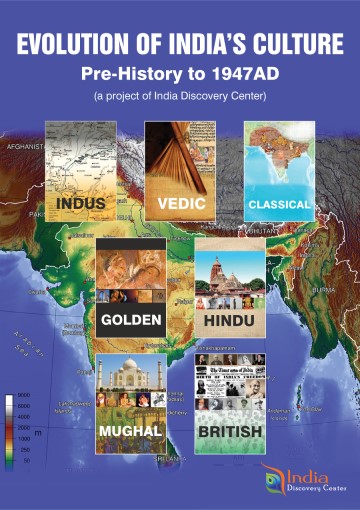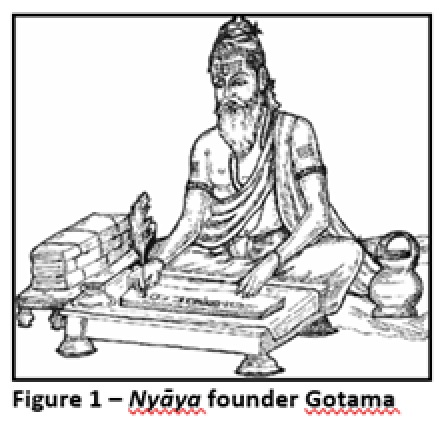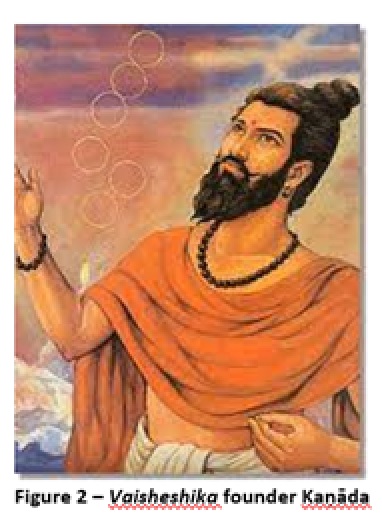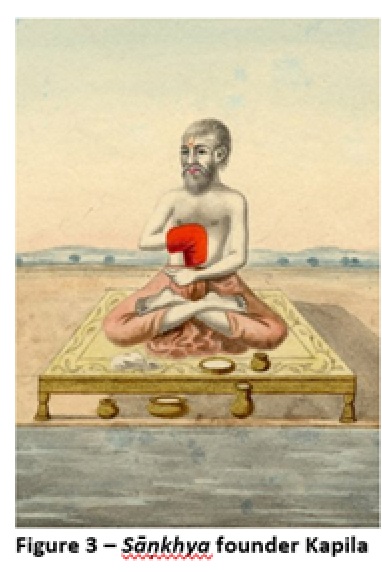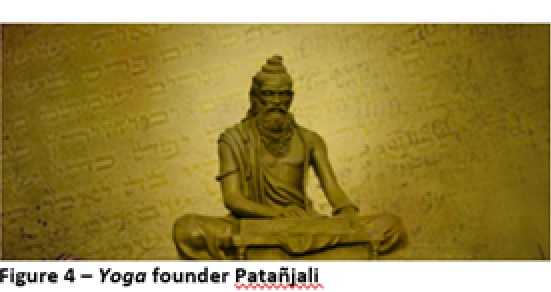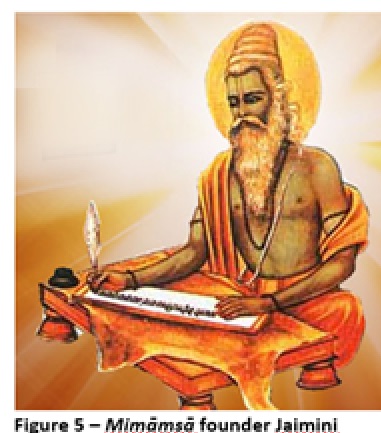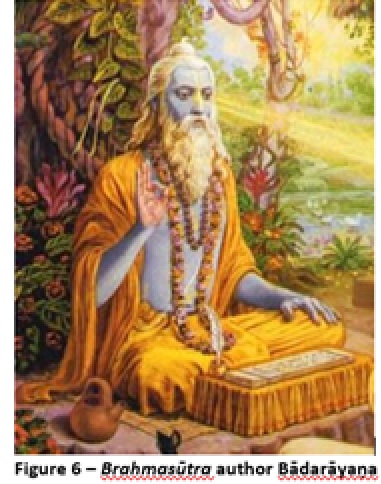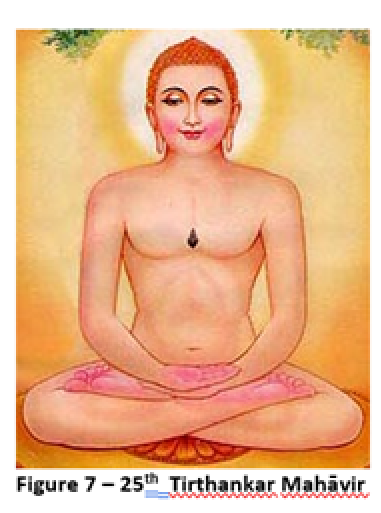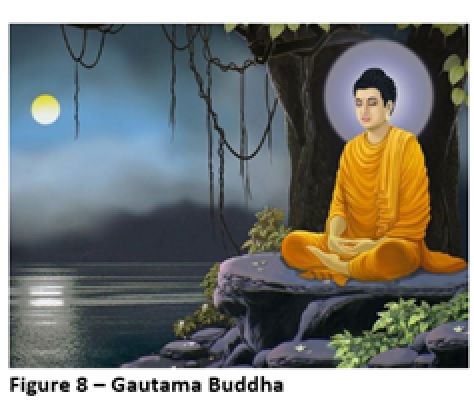Contribute
| India Classical Period (700BCE – 200BCE) – Philosophy And Religion |
Satyendra Sharma
04/15/2021
Philosophy: The Vedic inferences of sat (real ) and asat (unreal) were rigorously analyzed in the Classical Period. Six schools of Philosophy developed. NyÄya (conclusion of a syllogism) philosophy defines what exists. Understanding can be known via four types of pramÄnas (proofs)- pratyaksha (direct perception), anumÄna(inference), upamÄna(comparison) and Å›abda (verbal testimony). Sat is what exists and is real. False perception leads to viparyaya (confusion) which is asat Vaisheshika brought the concept of kÄla (time) where the objects of knowledge are transient. Sat is nitya (eternal) and beyond kÄla. However, entity like anu (atom)being indestructible/eternal and motionless gets its initial motion from adrishta (unseen power). SÄņkhya admits three proofs of valid knowledge – pratyaksha, anumÄna and Å›abda. How the object is perceived depends on the perceiver who is influenced by the manas (mind). Prakrti (nature) is the material cause of the universe and is asat. Prakrti remains avyakta (unmanifested) till it comes in contact with the Purusha (the supreme self) to become vyakta (manifested). Yoga brings in viveka to realize sat or purusha. To help realize the purusha, manas needs to get rid of the vr̦ittis (mental aberrations). To achieve this, yoga has prescribed ashtanga yoga (eightfold methodology) – yama (abstainment), niyama (observance), Äsana (posture), prÄn̦ÄyÄma (breath control), pratyahara(control of senses), dhÄrÄnÌ¦Ä (concentration), dhyana(meditation) and samÄdhi (absorption). MimÄmÌ£sÄ accepts the authority of Vedas in the inquiry of the meaning of true knowledge. As per Jaimini, Truth can be revealed in multiple ways. There are six pramÄnÌ£as of valid knowledge adding arthÄpatti (hypothesis) and anupalabhi (negation) to the four types of proofs described in Vaisheshika. VedÄnta considers Brahman as the ultimate reality that pervades everything and is beyond sat and asat. Having knowledge of Brahman would mean becoming Brahman. MÄyÄ (illusion) is responsible of multiple perceptions. The VedÄnta philosophy is embodied in Upanishads. Several non-vedic schools also established their thoughts with rigor. LokÄyatavÄda is a materialistic philosophy that accepts pratyaskha pramÄnÌ£a as the only basis of right knowledge. As per this line of thought, the svabhÄva (nature) is all pervading. The events occur yadrachiya (by chance) as opposed to having a higher power controlling them. Since death is the eventuality; the penances, sacrifices and asceticism would not help in any way. Jaina philosophy brought in the concept of individual’s accountability for their karma (actions) by undergoing atonement for the unrighteous actions. Sanchita (accumulated) karma causes cycles of birth and death. Moral life consists of – ahimsa(non-violence), satya (truthfulness), asteya (coveting others possessions), brahmacharya (celibacy) and aparigraha (non-attachment). Buddhism proposed a middle ground between extreme austerity in Jainism and Vedic rituals for the liberation. Everything in the universe is transitory, including pleasure and pain. The vÄsasanÄs (desires) lead to bondage. Liberation from bondage (NirvÄnÌ£a) is the ultimate goal that can be achieved by following the eightfold path – samyak drishti (right view), samyak sankalpa (right intention), samyak vÄk (right speech), samyak karmanta(right action), samyak ajiva (right livelihood), samyak vyÄyÄma (right effort), samyak smriti (right mindfulness) and samyak samÄdhi (right concentration). Religion: The vedic rituals were a part of daily life for the vedic people. The dhÄrmic rituals were performed for the fulfillment of artha(prosperity), kÄma (desires) and moksha (liberation). The non-vedic people had religious beliefs connected to nature and objects in nature. Idol worship began around the Buddha’s time. The statue of Buddha might be considered the first anthropomorphic symbol of divinity. Stone worship was popular in the south with naturally formed objects “linga†(the symbol) in worship. While the Vedic rituals were performed open air, the Buddhists and Jainas constructed rock cut caves for residence and meditation. Buddha Viharas were built, many of which were converted to Hindu temples in later years. Artistic iconography of the Vedic deities did develop around 3rd century BCE. Earlier motifs of religious scenes and depiction of auspicious events were gradually replaced by anthropomorphic deities believed to be of divine origin. Excellent iconography continues to be unearthed. Many of the religious events did convert themselves to be large scale social celebrations with festivities, food, music and dance. All parts of the society participated in such events and contributed their skills and expertise. There was over all religious harmony in the country. References: 1. The Nyaya Sutras of Gotama –The Sacred Books of Hindus – B.D. Basu, Vijaya Press, 1913 Figure 1 - https://swarajyamag.com/culture/a-vedic-touch-to-logic-in-the-indian-thought - Gautama (c) Copyright 2021 India Discovery Center, Inc. All rights reserved.India Classical Period (700BCE – 200BCE) – Philosophy and Religion
2. The Vaisheshika Sutras of Kanada - The Sacred Books of Hindus – B.D. Basu, Vijaya Press, 1923
3. The Sankhya Aphorisms of Kapila – James Ballantyne, Trubner & Co, London, 1885
4. Mimamsa Darshanam (Hindi) – Tulasiram Swami, Swami Press, Meerut, 1915
5. Yoga Sutras of Patanjali with exposition of Vyasa -Pandit Ursharbudh Arya, Pennsylvania ,1986
6. Jainism and Buddhism – Internet Archives (Archive.org)
Figure 2- wikimedia.org – Kanada
Figure 3 - https://fr.wikipedia.org/wiki/Kapila - Kapila
Figure 4 - https://yogawithsubhash.com/2021/02/05/ysp-am-intensive-online-0221/ - Patanjali
Figure 5 - https://www.astroved.com/astropedia/en/gods/jaimini - Jaimini
Figure 6 - http://www.hindupedia.com/en/Maharshi_Vyasa - Badarayan
Figure 7 - https://www.dlshq.org/saints/mahavira.htm- Mahavira
Figure 8 - https://www.timesnownews.com/ - Buddha
You may also access this article through our web-site http://www.lokvani.com/
